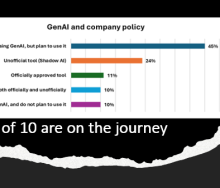The recent unrest which cost businesses tens of millions across KwaZulu Natal and Gauteng recently brought home a number of key lessons: the unexpected can happen – quickly – and physical security barriers are not always enough to protect lives and assets.

This is according to Mark Zheng, managing director of SA Hytera, who says the damage and losses sustained during the unrest illustrated that multi-faceted safety and security models have to be deployed, and that communications underpins all risk management strategies.
“During the recent unrest, communications infrastructure was also affected, with over 100 network towers reported to have been impacted. This hamper coordinated collaboration between joint task teams,” he says. During a crisis, there is typically a great deal of complexity and uncertainty, with much more communications taking place than usual, and decisions must be made and communicated quickly to all stakeholders, he notes. “Teams have to be able to report the situation on the ground to a central crisis command point, from where orders and information must be relayed to responders and other stakeholders. Without clear and reliable communications, confusion can ensue and there could be delays in response that put people, property and other assets at risk.”
“To mitigate the risk of network outages hampering communications and incident response, it is of paramount importance that a narrowband-broadband convergent network is considered. The public LTE network is not highly secure in the way the narrowband network is, whilst data transmission capacity of narrowband network is very limited. A convergent network is the best possible choice in case of emergency.”
A converged narrowband and broadband solution featuring multi-mode advanced radios, which integrate TETRA/DMR, cellular, 2G/3G/4G LTE, Wi-Fi and Bluetooth will provide mission-critical voice and broadband data on the same device, empowering seamless coordination and dispatching of different organisations and departments.
“Investing in a converged communication network should be seen as key to a solid security and risk management strategy,” says Zheng. “Whether an organisation is a security operation, transport business, industrial or commercial business, or even a remote facility such as a mine or agricultural operation, it is important to be prepared for every scenario, both to assure business continuity and to underpin the safety and security of people and assets. Dependable and non-disparate communications platforms support safety and security response and collaboration – no matter what situation is unfolding.”
Mark Zheng says public safety, emergency services and disaster control officials should be equipped with mission critical communications solutions, supported by a central command and control facility that has the capability to interconnect all communication platforms so that different departments such as police and emergency services can communicate with each other in joint operations.















